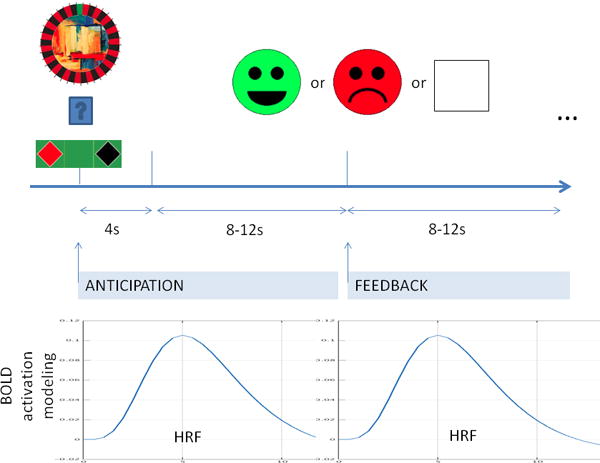Figure 1.

Illustration of the reward and punishment learning task. First, there is the presentation of the cue. The participant has 4 seconds to choose either red or black. Feedback is shown after 8-12 seconds (randomized) of waiting period. Similarly, feedback is followed by 8-12 seconds long period. These longer periods prevent HRFs (hemodynamic response function) to interfere across trials and provide a framework to model anticipation and feedback separately. (For more detail see text.)
